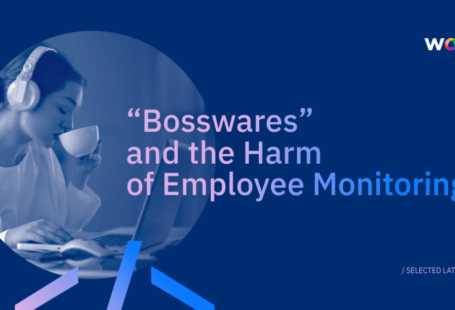Initially viewed as an exceptional resource to “filling the cracks”, the alternative workforce is now becoming vital for the future of work.
Over the years, this talent pool has built a community which has reaped a 4.5 trillion dollar business worldwide in 2018, according to Staffing Industry Analysts (SIA) estimates. Under such a label, we find multiple types of arrangements on which people may perform a variety of tasks:
- Outsourced teams
- Freelancers (generally paid by the hour)
- Contractors (paid by completed job)
- GIG workers
- Outsourced networks – also referred to as ‘the crowd’.
A recent survey among executives conducted by Deloitte, Human Capital Trends, highlights that 33% of respondents turned to the alternative talent segment for IT (33%), Operations (25%), Marketing (15%) and Financial tasks (13%).
Among the figures which stand out, the US leads the trend with 42 million people estimated to work under this model by the year 2020. The freelancer boom in the European Union has doubled the number of workers taking part in this segment between 2000 and 2014. Moreover, Deloitte’s 2018 Millennial Survey has found out that 64% of full-time workers are pecking on freelancing to make some extra money.
Flexibility and Engagement

The picture of alternative arrangements is not painted all rosy, though. In its 2018 Survey, The Gig Economy and Alternative Work Arrangements, Gallup marks a clear distinction between
- Freelancers (platform workers or “the Human Cloud”)
- Contingent gig workers (on-call, contract, and temporary workers)
According to Gallup, freelancers enjoy greater autonomy and flexibility, and therefore they tend to be more engaged than full-time workers. The situation is entirely different for Contingent Gig workers, who cannot count on these same benefits and advantages. It is perceived that the lesser the flexibility and autonomy, the more disengagement at work.
Motivations behind the alternative workforce boom
Taking into account that half of the alternative workforce are Millenials and Gen Zers, insight on their perceptions may prove helpful to grasp their motivations. Deloitte’s survey underlines Millenials express:
- A sense of insecurity derived from the current socio-political context, preventing them from putting “all the eggs in one basket”.
- A negative vision of those work environments which value profits above all
- Disengagement at work, when business ethics do not match societies’ goals, and value statements misfit behavioural patterns.
- Loyalty is not only build based on good pay: flexibility, diversity/inclusion and balanced motivation are equally important at a workplace.
- Talent development and mentoring, ethics, innovation, creativity, and emotional intelligence in senior management are coveted values.

Both Millenials and Gen Zers professionals unsatisfied with their workplace culture are increasingly turning to Gig economy. Additionally, considering that 43% of Millenials foresee leaving their jobs in two years, one of the most prominent challenges organizations are dealing with is attracting and retaining talent. Especially, knowing they are willing to move on to some better workplace experience.
At the same time, a shrinking labour pool and shortages of critical skills pose many difficulties to find qualified candidates. Deloitte states that 45% of surveyed employers at large companies are struggling to fill open positions. The datum rises to 67% at SMEs. Older workers are retiring earlier and re-entering the labour market as freelancers. A large number of workers opt for a home-based model to be able to care for their elder parents or children.
In short, the scenario urge organizations to become more flexible and capitalize on the alternative force strategically on a broader sense than just meeting “occasional” needs. When local talent cannot be re-deployed, and the talent availability is scarce, openminded sourcing is increasingly viewing the “alternative” workforce as an excellent answer.
A particular agile mindset
Business Agility defines an organization’s capacity to respond to innovation requirements quicky, counting on the necessary processes, infrastructure and skills. Since we live in environments where change is the only constant, flexibility is one of the soft skills playing a leading role today.

Therefore, Agility is seen both as a framework and a flexible mindset enabling new ways of thinking to encompass the diversity as a key factor to success. In fact, the gap-filling needs are pushing towards a redefinition of Agility. Gallup brings up some interesting points that merit attention in which regards independent workers and teamwork building:
Psychological needs and motivations:
To inspire and motivate independent workers, we need to understand their needs and motivations. These may differ a lot from traditional full-time workers’ and may require a different managerial approach and value proposition.
For example, let’s imagine we are leading a team of freelance developers who are highly skilled but are used to work at night. Can we become flexible and agree on an everyday-schedule for sharing updates and issues? Or are we to discard these IT gems because they do not follow our fixed-schemes?
Team engagement/integration:
Almost half of the independent workers have limited relationships with organizations. How can managers better integrate our alternative workers into our permanent teams?

One good advice is to share contingent mates talent profiles: by doing this, we help full-time workers to welcome the new member based on reasonable expectations and foster trust. Also, if we have team members with different time zones, many tools can help us cope with the distance: Slack, for example, is excellent to ensure team-channels on which to follow-up on day-to-day issues and exchange information to enhance productivity.
But paying attention to the style of communication is also essential: warm, distant, muted or hostile, how people talk to each other is always a hint of how they view each other.
Onboarding:
Managers have a great responsibility in conveying the organizational culture, values and expectations rapidly in a meaningful way. What tools can we use to instil our values better?
Firstly, believing in those values ourselves. And secondly, reminding to contingent workers, peers -and us- the ultimate purpose of work.
- Why are we working on this?
- How will my contribution impact on the whole?
Putting back meaning into action is essential to keep teams motivated. Ultimately, the purpose is what dignifies and humanize our tasks.
Planning:
Project managers who teamwork with independent workers must keep fluid communication and rely on documentation as they move into and out of projects. In this regards, holding frequent face-to-face meeting would be the best option.
When this is not possible, technology brings numerous Cloud-based tools to bridge the distance, from virtual meetings like Zoom or collaboration environments such as Asana or Trello.

Performance metrics:
It is vital to find ways of assessing our alternative pool selection process, review, and performance to ensure we get the most talented partners.
Employee experience:
What employee experience we are offering to our independent workers? How can we optimize the progress of our outsourced talent? What resources can we deploy to “check the pulse” on our alternative workers?
In this regards, Ben Whitter, Founder of the World Employee Experience Institute in the UK, underlines how essential is “to consider humans and technology together, as a reflection of each other”. Therefore, a good criterion for validating the deployment of any solution or tool is answering the following question:
- Does it deepen the connection between people?
- Does it improve or enhance relationships?
These are particularly important questions when we are working with team-mates with limited access to bonding within the organization.
Strategic thinking
The alternative workforce provides excellent opportunities for organizations living in a highly competitive environment which demands ever-changing skills. But we should be aware a well-defined strategy is key to get the maximum from this talent pool.

Organizational leaders must analyze which positions are best suited for gig workers, and which ones remain critical from an operational, information or brand perspective.
Another crucial aspect to consider is how permanent workers perceive contingent peers’ inclusion. Concerns may arise among employees; how freelancers intrusion will impact on their performance or speculations about full-time workforce replacement may show up. Far from avoiding the subject, addressing these concerns straightforwardly will avoid hallway conversations spreading distrust.
How to engage, develop or even promote talent that may be working for the business competitors should also be a matter of discussion. Designing adequate onboarding and team-building processes with insight into our outsourced partners’ needs is vital to provide the best possible experience at work. Sharing our goals, offering and asking for feedback, is equally essential to provide for meaningful work experience.
At the same time, developing team leadership to guide, motivate and support groups of workers with different cultural backgrounds and needs is increasingly important to overcome challenges posed by the future of work.
—
You might be also interested in:
- Are you going to create a project in Workana? Don’t forget these 10 tips to have the best experience
- Digital Transformation: Can remote professionals be the key to taking the next step in your business?
- Seven keys to a successful remote work team





